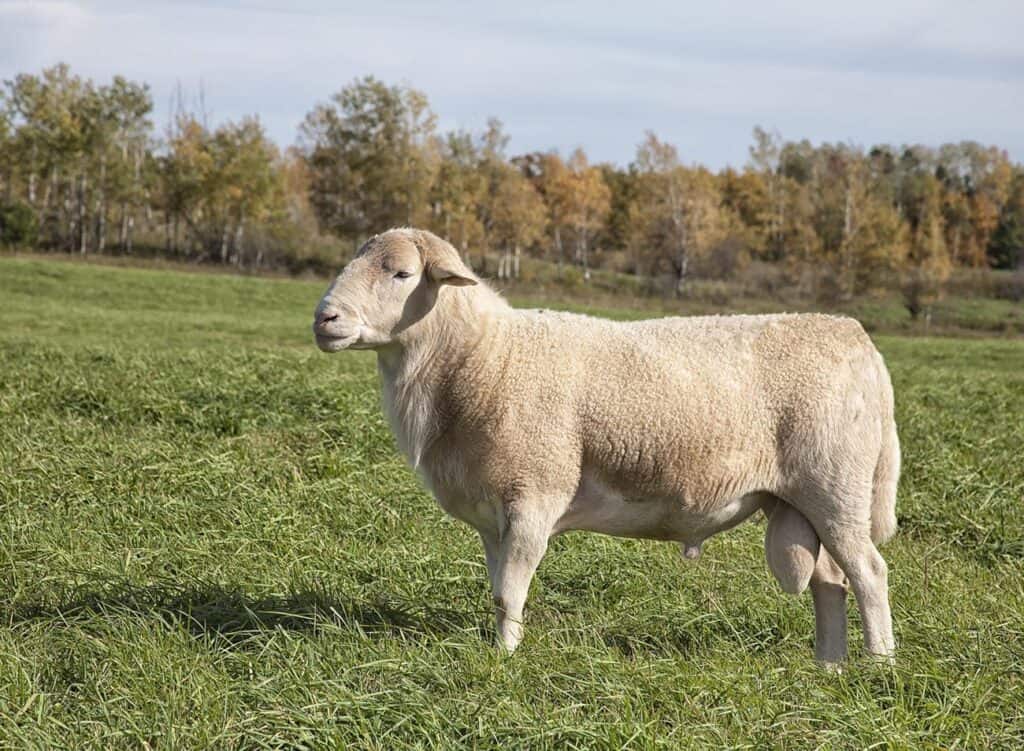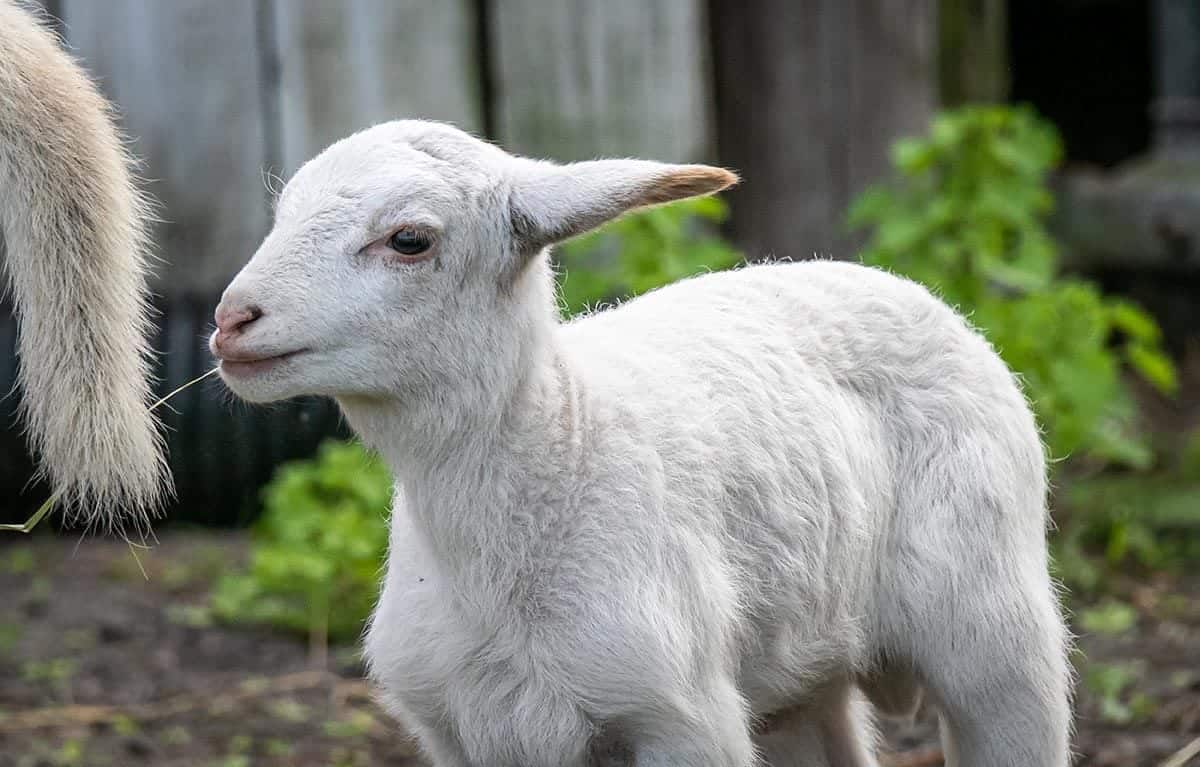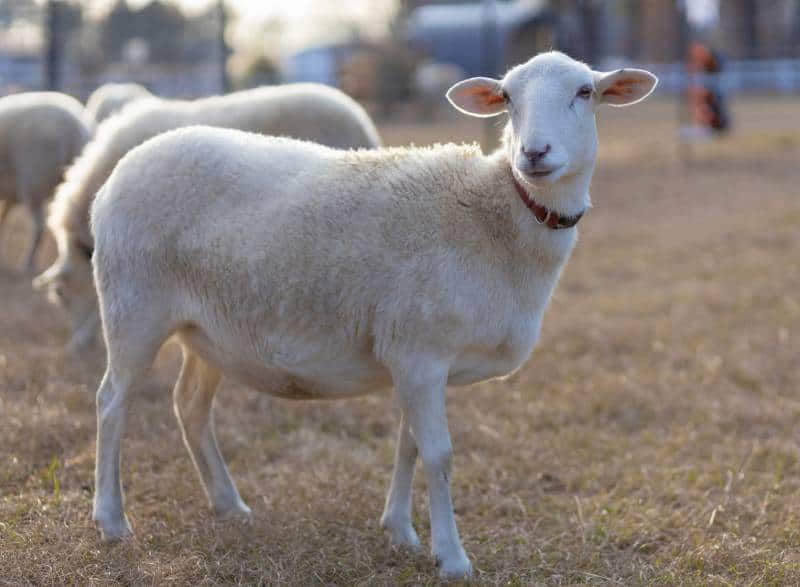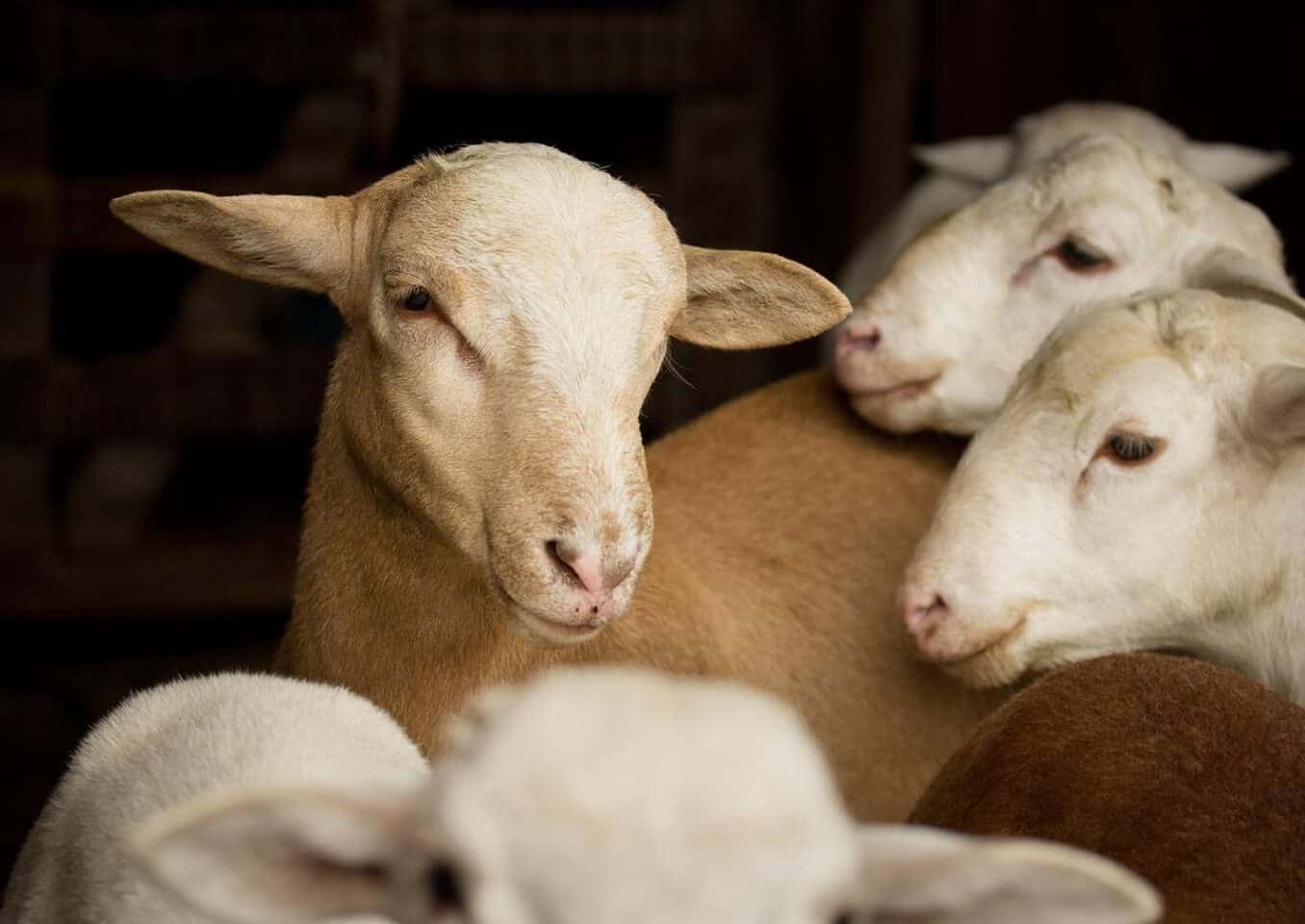The Katahdin Sheep is a domestic breed developed in Maine in the United States and named after the highest peak in that state, Mount Katahdin. The breed was developed in the mid-1950s by crossing imported St. Croix Sheep and several other breeds, including the Suffolk Sheep. They are raised predominantly as meat animals in the U.S. and have become enormously popular in recent years due to high shearing costs and low wool prices. Katahdin Sheep are unique in that they do not have woolen coats, but hair instead, and they naturally shed their winter coats, making them far less maintenance than woolen sheep breeds.
If the Katahdin Sheep sounds like the breed for you, read on for more in-depth info on this unique breed of sheep.

Quick Facts About Katahdin Sheep
| Species Name: | Ovis aries |
| Family: | Bovidae |
| Care Level: | Moderate |
| Temperament: | Hardy, adaptable, docile |
| Color Form: | Most commonly white, but also black, brown, and red |
| Lifespan: | 10–12 years |
| Size: | Medium-sized, 140–185 pounds |
| Diet: | Herbivorous |
| Minimum Enclosure Size: | 16–20 square feet indoors, about 6 sheep per acre outdoors |
| Compatibility: | Friendly, docile, and easygoing |
Katahdin Sheep Overview

Katahdins are medium to large sheep and are highly adaptable, hardy, and low-maintenance animals that are a great point of entry for small-time sheep farmers. They were developed from both Caribbean and British breeds and can tolerate a wide range of climates. In winter, they grow thick coats to keep them warm, which they then shed in summer. They are also highly tolerant of both internal and external parasites and only require minimal parasite treatment if well looked after. They are docile and friendly animals that are easy to handle and are a great species to have on a small homestead.

How Much Do Katahdin Sheep Cost?
Depending on demand and availability, a Katahdin lamb will typically go for $300–$600. They have swiftly become one of the most popular breeds in the United States and are easy to obtain. These sheep are often crossbred, so make sure that the breeder you purchase them from has all the necessary paperwork to prove that they are purebred, as it can be difficult to tell the difference in lambs.
Typical Behavior & Temperament
Being such docile and friendly animals, Katahdin sheep are happy to be handled, and when raised properly, they have little fear of humans, certainly less so than other sheep breeds. They do enjoy living in flocks, but they flock only moderately and can be seen venturing alone if they feel safe. Mothers are particularly loving and display an affectionate, protective mothering instinct. This is the only time that you may see a Katahdin acting aggressively.
Appearance
While Katahdin Sheep are most commonly white, they can also be found in solid or variations of brown, black, and red and more rarely, almost any color combination. They are hair sheep and thus have the ease of not needing to be sheared annually like other sheep breeds. They simply shed their coat naturally in the summer months.
Katahdins are medium-sized sheep, and rams (males) typically weigh 180–250 pounds, while ewes (females) weigh around 125–185 pounds.


How to Take Care of Katahdin Sheep
Shelter
Although Katahdin sheep are hardy and can tolerate cold and hot climates, they still need adequate shelter for sleeping, protection from predators, and most importantly, for lambing. Ideally, the shelter should be made from wood with a door that can be latched to keep them in at night or in bad weather or to keep other sheep out while mothers are lambing. Soft bedding like hay is a must, and it will need to be changed regularly. The shelter should also be well ventilated for warmer weather, and unless you live in extremely cold climates, insulation is not too much of a worry.
Enclosure
To keep your Katahdin where you want them, a sheep-proof fence is essential. This serves both to keep them enclosed in an area where you want them to graze, as well as to keep potential predators out. Woven wire is the cheapest and simplest option, and it is easy to install and move if necessary. Electric fencing is great but costly to set up initially, and the docile nature of Katahdin sheep doesn’t really require it. If you have a major issue with large predators, though, electric fencing may be the best option.
Do Katahdin Sheep Get Along With Other Pets?
Katahdin sheep are friendly, non-aggressive animals that will generally get on famously with other livestock and pets. Although many farmers warn against keeping different species of sheep together, this is largely due to their differing needs and the associated costs than their temperament. These sheep are also commonly used for crossbreeding, further proof of their adaptability and friendliness toward other sheep breeds. The only time they may show aggression toward other sheep is males at breeding time or when mothers have young lambs, as they can be highly protective.

What to Feed Your Katahdin Sheep
A Katahdin Sheep’s diet consists of mostly grazing on pasture or in winter, good-quality hay. Pasture is the healthiest diet for them because it is the most varied. It typically consists of not only various grasses but also weeds, clovers, and flowers, all of which give them beneficial nutrients. You may need to supplement their pasture feeding with additional hay at times and add extra nutrients when necessary.

Keeping Your Katahdin Sheep Healthy
The Katahdin Sheep is generally a hardy, healthy breed that suffers from few health issues, largely due to their mixed genetics. They are also highly resistant to parasites, both internal and external, for this reason. This makes them one of the easiest sheep breeds to care for, especially because they do not need regular shearing and they shed their coats naturally. Provided that your Katahdin feeds on a healthy, varied diet and has plenty of space to roam, they will likely live long, healthy lives.
Breeding
Both ewes and rams mature early and live long, productive lives. Mothers will typically be ready to breed at around 10-12 months old and will typically have twins and sometimes triplets. The rams are aggressive breeders and are generally fertile all year round, and ewes are strong, protective, and affectionate mothers that easily lamb without assistance. Mothers rejecting their lambs is rare.
Katahdin Sheep can easily be crossbred and this is common practice. When they are crossed with wool sheep, the first generation of offspring will usually have a dense wool coat with interspersed hair. It typically takes about three generations of breeding to produce offspring with a shedding hair coat.

Are Katahdin Sheep Suitable for You?
Due to their lack of wool coats, Katahdin Sheep are generally easier to care for than other sheep breeds because they don’t need annual shearing. This makes them an ideal choice for beginner livestock keepers, as well as the fact that they are docile and friendly and highly resistant to parasites. With their friendly nature, low care needs, resistance to parasites, and moderate size, Katahdin Sheep are great additions to any small homestead!
Featured Image Credit: Veda J Gonzalez, Shutterstock
